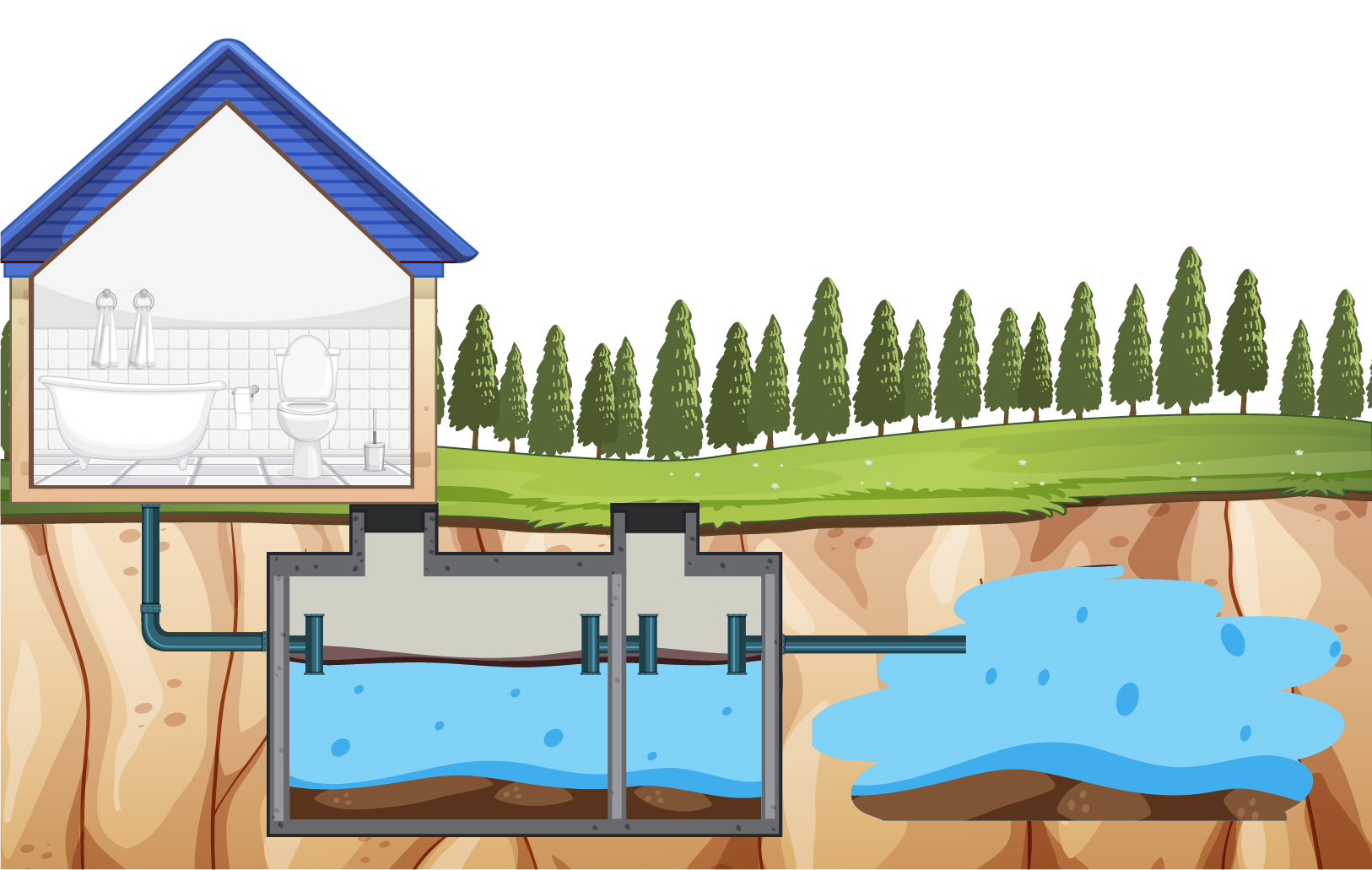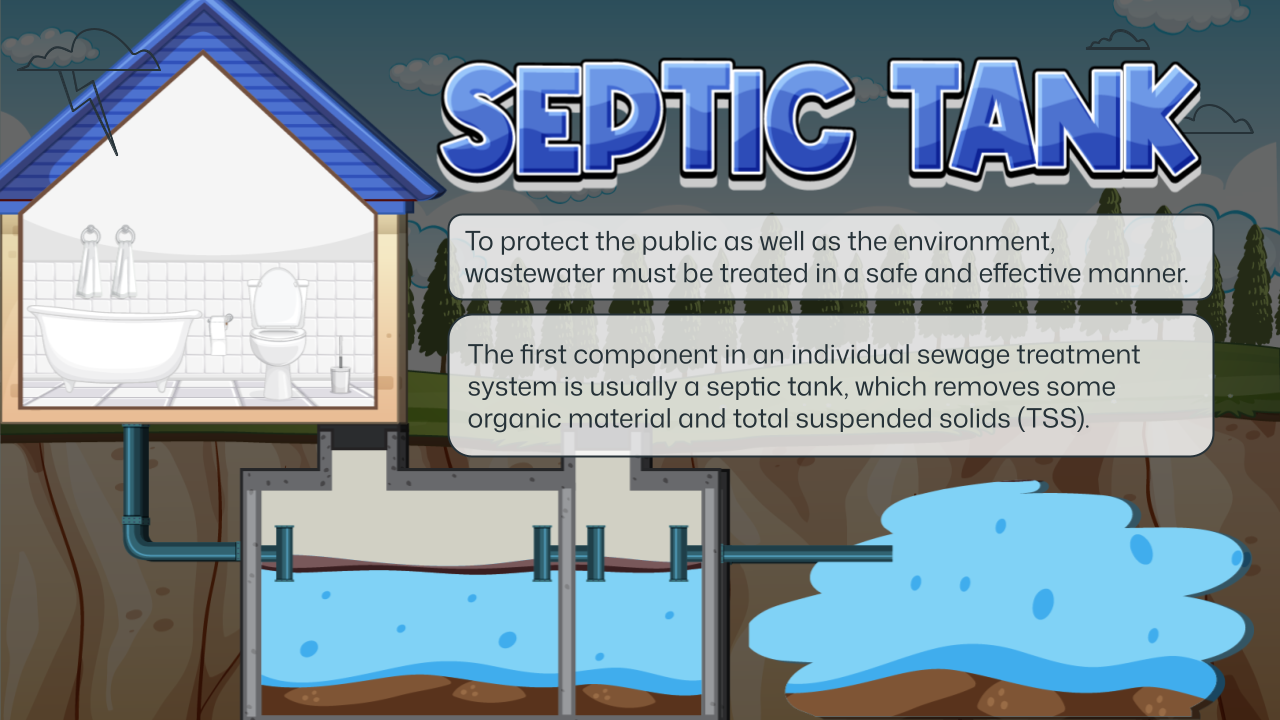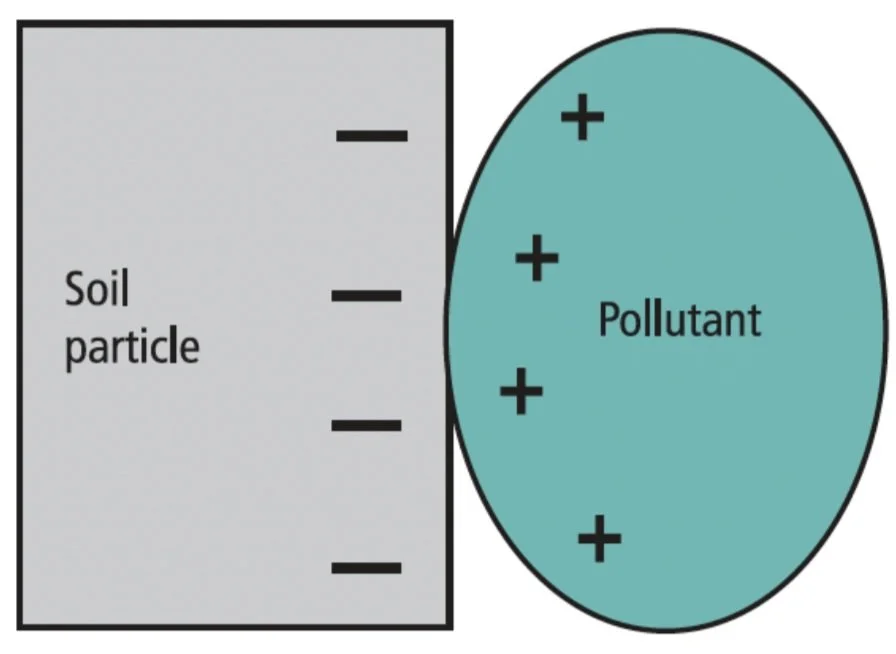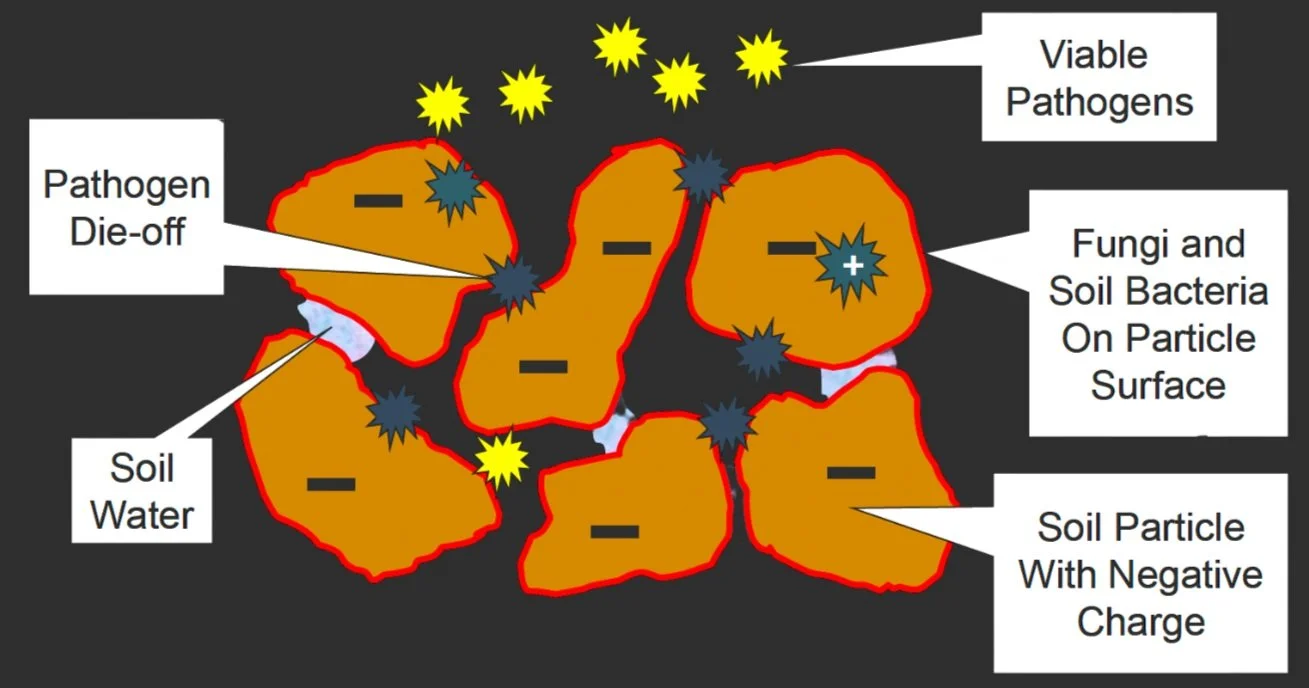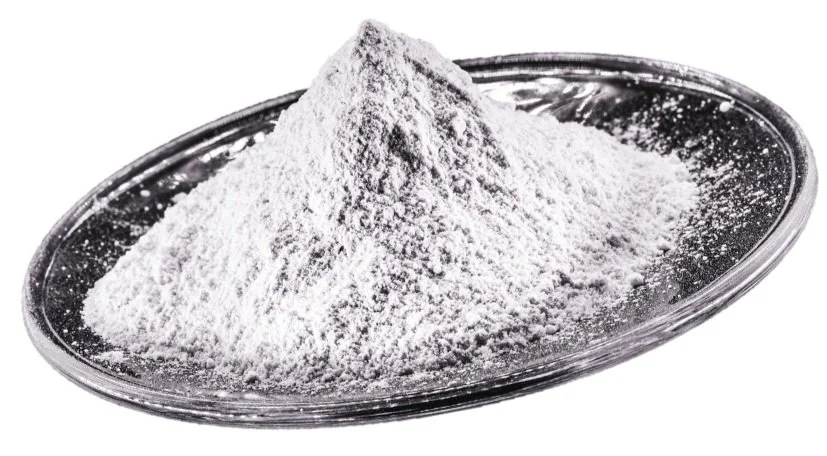SOIL AS A TREATMENT MEDIA
Suitable soil is an effective treatment medium for sewage tank effluent because it contains a complex biological community.
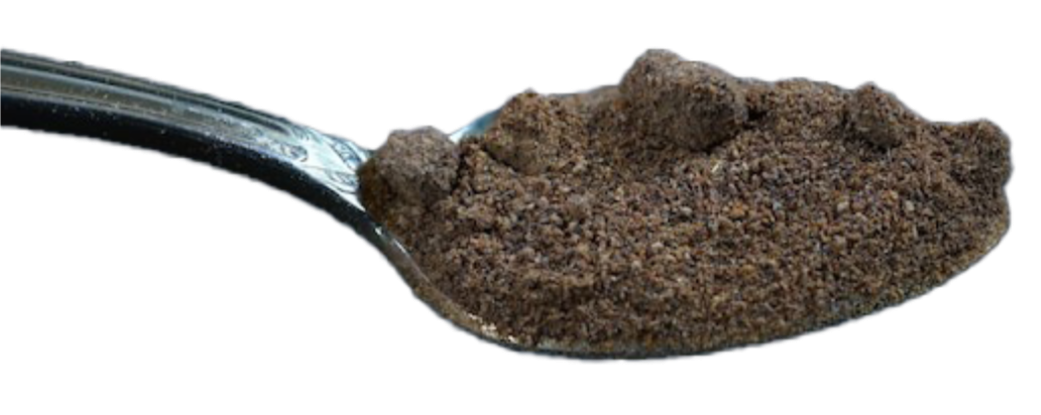
The bacteria and other microorganisms in the soil treat the wastewater and purify before it reaches groundwater.
One tablespoon of soil can contain over one million microscopic organisms, including bacteria, protozoa, fungi, molds, and other creatures.
Wastewater must pass through the soil slowly enough to provide adequate contact time with microorganisms.
To provide adequate time for treatment of septic tank effluent, it is necessary to have at least three feet of aerated or unsaturated soil and limit the loading of effluent. Microorganisms in soil treat wastewater physically, chemically, and biologically before it reaches the groundwater, preventing pollution and public health hazards
How Soil Helps in Cleaning the Wastewater?
Microorganisms in soil treat wastewater physically, chemically, and biologically before it reaches the groundwater, preventing pollution and public health hazards.
When a septic system fails to effectively treat and disperse effluent, it can become a source of pollution. This type of failure can occur in three different ways.
The first way is when effluent ponds on the soil surface, causing a wet seepy area.
The second obvious way that a septic system can fail is to have effluent backing up into the dwelling.
It is also important to prevent a third, and less obvious, type of failure, which is contamination of the ground or surface waters.
What is a BIOMAT?
The Biomat is a biological layer formed by anaerobic bacteria, which secrete a sticky substance and anchor themselves to the soil, rock particles, or other available surfaces. The biomat develops along the soil-media contact surfaces on the trench’s sidewalls.
When fully developed, the gray-to-black sticky biomat layer is about one inch thick.
A developed biomat reaches equilibrium over time, remaining at about the same thickness and the same permeability of effluent quality is maintained.
SOIL TREATMENT
Aerobic bacteria provide treatment and function optimally in aerated soil because they prefer oxygen. If the soil is saturated and no oxygen is present, anaerobic bacteria function, but they provide insufficient treatment. Bacteria and total suspended solids contained within septic tank effluent have been found to be treated and removed in the first foot of most aerated soil under the trench.
Because soil particles are negatively charged, they can attract and hold positively charged pollutants. Soils also contain minerals that bind with some pollutants and immobilize them.
Pathogen Removal
Bacteria in effluent are typically large enough, aggregated with other bacteria or associated with solids, that they are filtered out like suspended solids (Gerba and Bitton, 1984). Viruses are much smaller than bacteria, and are not filtered (Coyne, 1999).
Filtration, adsorption (nutrients and virus), predation, and retention/contact time increase treatment. Pathogens are retained on particle surfaces or in small pores.
Certain soil fungi naturally produce antibiotics that attack some contaminants. Others consume the bacteria and viruses as a food source.
Nitrogen Removal
Nitrogen is a concern because it can contaminate drinking water. Nitrogen undergoes many changes as it travels through a septic system. Septic tank effluent contains both organic nitrogen and ammonium (NH4+).
Phosphorus Removal
Phosphorus from onsite sewage treatment systems must not enter lakes through the groundwater.
Phosphorus is removed from wastewater by being chemically bound by minerals and held on exchange sites on soil particles. Iron, calcium, and aluminum are minerals that chemically bind with phosphates in a process called adsorption.
The longer contaminants remain in unsaturated soil, the greater the opportunity for treatment. One way to enhance residence times is to ensure that less water percolates through the soil to carry contaminants into groundwater before treatment is achieved.
